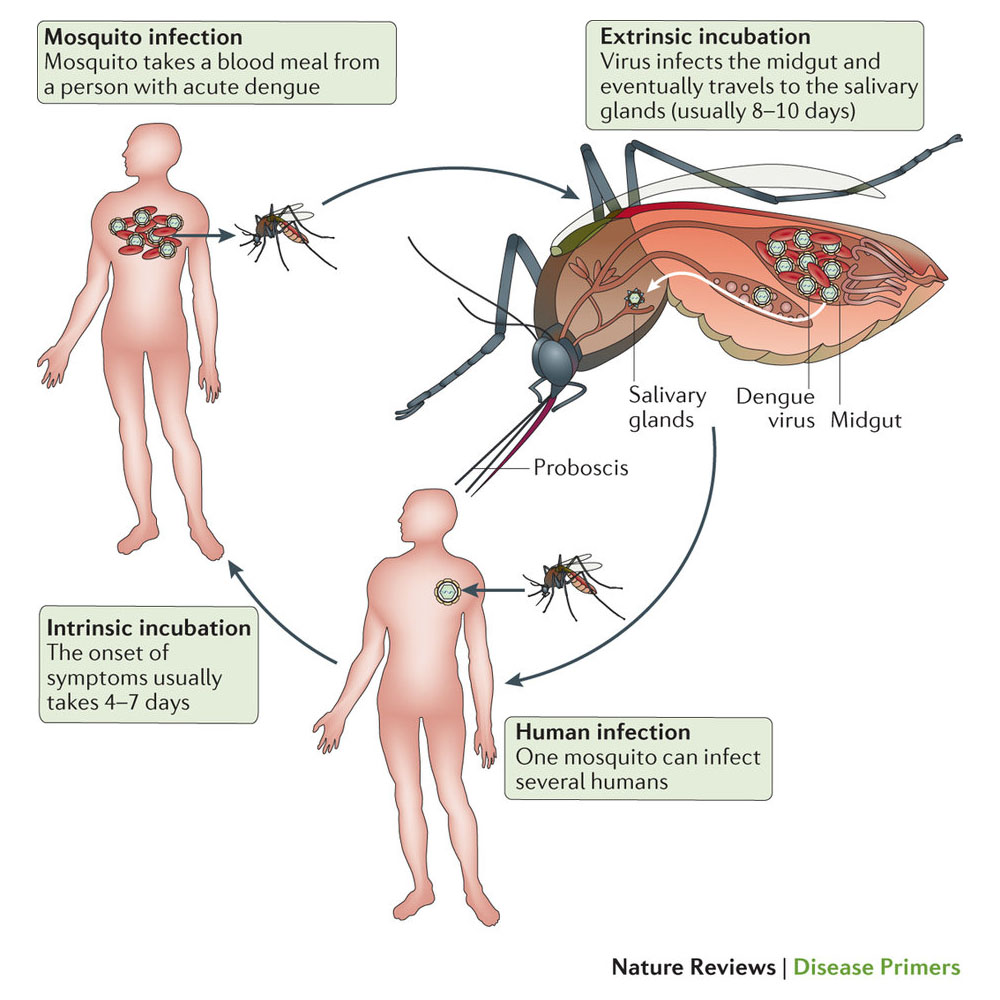Review Abstract
デング感染症
Dengue infection
2016年8月18日 Nature Reviews Disease Primers Article number: 16055 (2016) doi: 10.1038/nrdp.2016.55

デング熱は熱帯地域全体に蔓延しており、デングウイルスの伝播の地域空間的変動は雨量、気温、都市化および主なベクターであるネッタイシマカ( Aedes aegypti.)の分布によって強い影響を受ける。現在、地中海東岸、アメリカ大陸、東南アジア、西太平洋およびアフリカの各地域でデングウイルスの流行性伝播が報告されているが、ネッタイシマカや二次ベクターであるヒトスジシマカ(Aedes albopictus)が発生している地域にウイルスが侵入した結果、欧州や米国でも散発的な地域内伝播が報告されるようになった。この疾病の世界的負担は十分に明らかにされていないが、その疫学的パターンはヒトの健康と世界経済の両方に警鐘を鳴らしている。都市化の促進、飲料水の供給不足およびおそらくは環境変化の傾向によって、デング熱は今後の増加が懸念される疾患と見なされている。WHOによると、国家プログラムへの国際的な技術的・経済的サポートを組織化することでデング熱の制御は技術的に可能である。このPrimerでは、デング熱に関する疫学、感染制御、発症機構、診断、治療および研究の優先事項について概説する。
PrimeView
デング熱はデングウイルスの4種の血清型のいずれかによる感染症である。このPrimeViewでは、微熱性疾患から出血熱および循環性ショックに至るまでのデング感染症の臨床経過の機構について取りまとめる。
本Primerの図解サマリー
Dengue is widespread throughout the tropics and local spatial variation in dengue virus transmission is strongly influenced by rainfall, temperature, urbanization and distribution of the principal mosquito vector Aedes aegypti. Currently, endemic dengue virus transmission is reported in the Eastern Mediterranean, American, South-East Asian, Western Pacific and African regions, whereas sporadic local transmission has been reported in Europe and the United States as the result of virus introduction to areas where Ae. aegypti and Aedes albopictus, a secondary vector, occur. The global burden of the disease is not well known, but its epidemiological patterns are alarming for both human health and the global economy. Dengue has been identified as a disease of the future owing to trends toward increased urbanization, scarce water supplies and, possibly, environmental change. According to the WHO, dengue control is technically feasible with coordinated international technical and financial support for national programmes. This Primer provides a general overview on dengue, covering epidemiology, control, disease mechanisms, diagnosis, treatment and research priorities.

